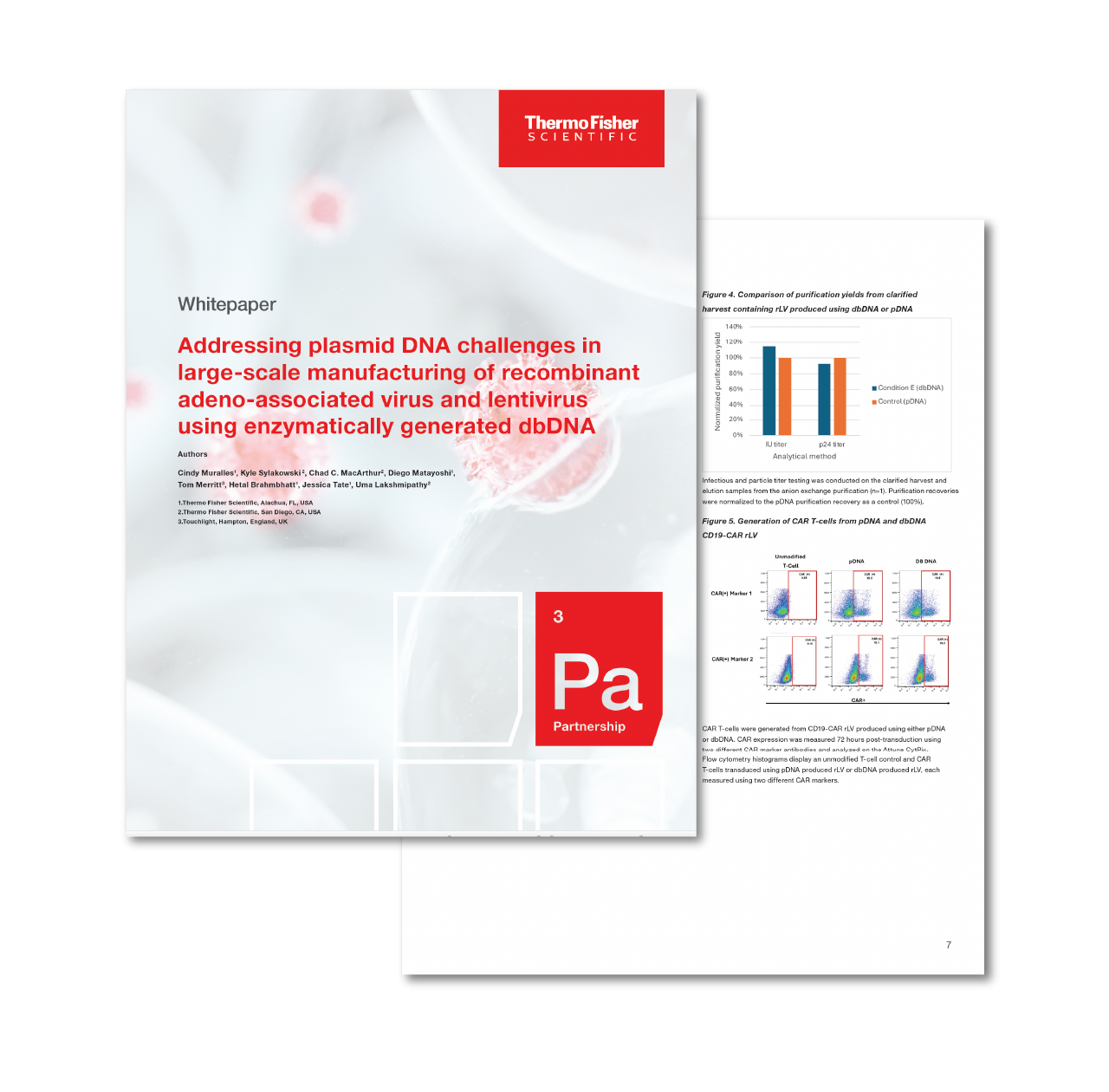The information you provide to the chat will be recorded to improve your experience and to contact you. Please read our privacy notice to see how we are processing and protecting your data. Click to view our Cookie Notice.
We'd love your feedback—take a quick survey to help us improve.
How can we help you today?
Search Patheon
Recent searches
Clear History
Suggestions
All Results
Thermo Fisher Scientific
Addressing plasmid DNA challenges in large-scale manufacturing of recombinant adeno-associated virus and lentivirus using enzymatically generated dbDNA
Whitepaper
Recent advances in gene therapy have increased the use of recombinant adeno-associated viruses (rAAV) and recombinant lentiviruses (rLV) as gene delivery vectors. However, challenges remain in scaling up their production due to reliance on plasmid DNA (pDNA).
Namely, traditional pDNA manufacturing methods face bottlenecks, including scalability issues and regulatory concerns related to bacterial contaminants and antibiotic resistance genes.
This whitepaper explores the use of doggybone DNA (dbDNATM), a synthetic alternative to pDNA, for producing rAAV and rLV. The results indicate that dbDNA offers a promising solution for overcoming limitations associated with pDNA in large-scale viral vector manufacturing.


